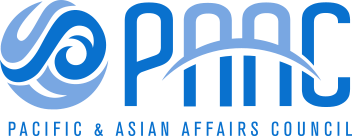This semester, our After School Global Studies Classes studied International Trade, Green Cities, and Asian Music. With the onset of the pandemic, our nine classes were quickly adapted for distance learning. Many classes met virtually and completed lessons on Google Classroom. However, many students did not have access to a computer or internet connection - 31 students in total, approximately 44% of class participants. Thus, PAAC adapted the curriculum to a paper-only format and mailed it to students to keep them engaged. Following the policy of the Hawaii State Department of Education, all fourth quarter work was enrichment-based.
As expected, there were many challenges to this new format: from getting shy students to engage and dealing with students’ numerous distractions at home, to fostering a collaborative classroom environment through a computer. PAAC’s After School teachers certainly rose to the occasion and delivered the curriculum in a conscientious manner.
Diving into Curriculum Units
Trade was explored from simple concepts of profit and loss, bartering, and one-to-one trades, to more complicated aspects, such as trade with multiple players. Students learned about the recent U.S.-China trade negotiations and engaged in debates from all perspectives.
In the Green Cities unit, students assessed different systems and their sustainability. They then creatively planned their own Green City, complete with a city charter! The finished projects were demonstrated on paper and some students used computer-generated models to showcase their dream city.
Asian Music was particularly challenging for students without technology access. Students did a great job of creating an instrument matching game and flashcards. They also made a survey comparing J-Pop and K-Pop after reading articles on both styles.
Global Action Projects
A Global Action Project (GAP) is an integral part of every After School Global Studies class. GAPs encourage students to look at international issues, while taking action on the local level. Teachers guide students to identify their issues of interest and how to plan and implement a project that benefits the community. Students have full ownership over their group projects.
Unfortunately, classes were in the GAP planning stage when the pandemic hit, so they werewere unable to complete their projects. Each class’ GAP idea shows the unique passions and needs of our diverse students and communities. Students were working on the following initiatives:
- * A zero-waste campus initiative.
- * A project called “Food for Thought,” to bring healthy meals to students at no cost.
- * A presentation to the school student body presenting concepts learned from the Green Cities unit.
- * An informational campaign to educate the community about illicit animal trading.
- * An exploration of tiny homes and how they could be used to address the needs of the homeless community.
- * Environmental actions such as fishpond work days and beach clean-ups.
We look forward to seeing these projects come to fruition in future PAAC classes.
